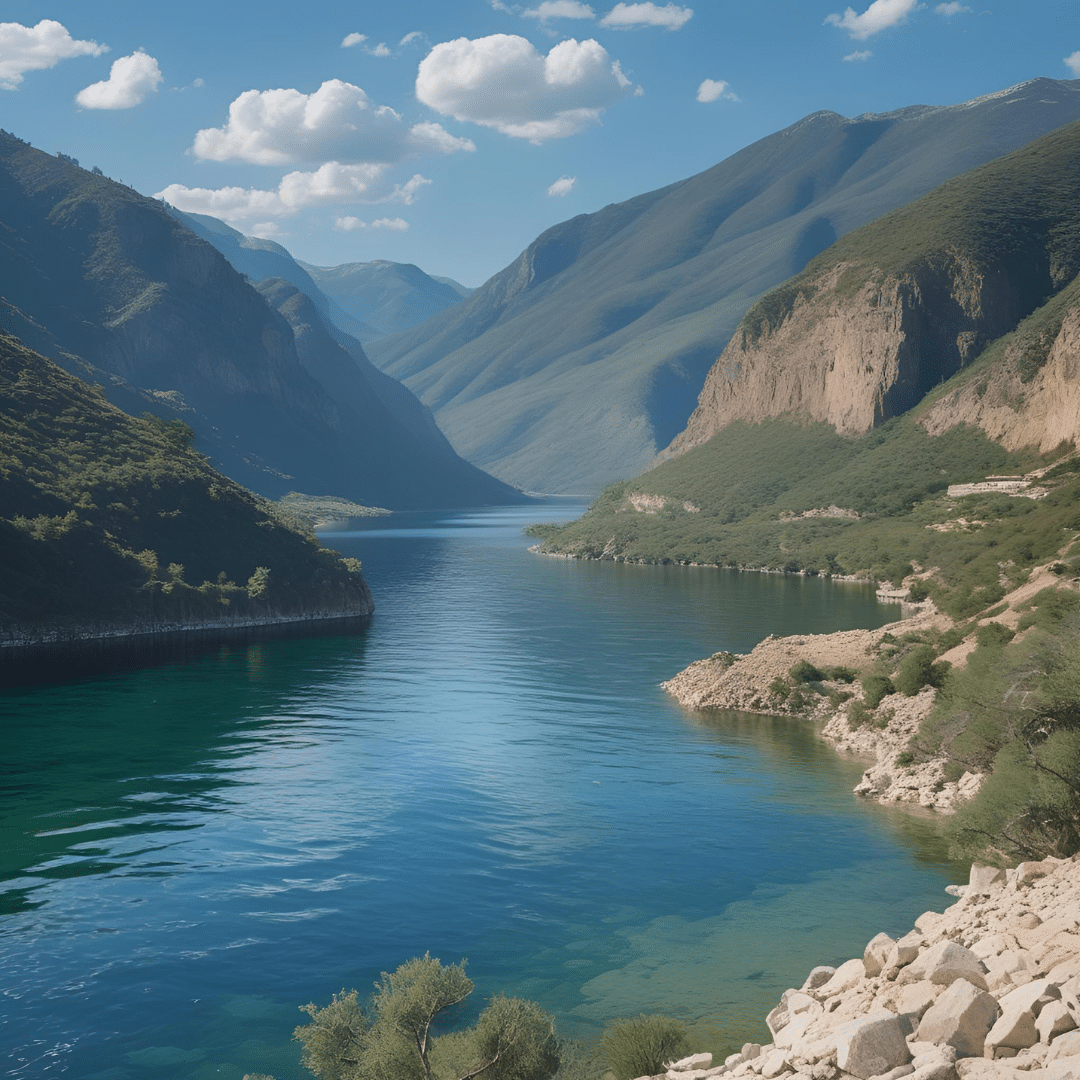Lake Travis: The Low Water Levels Story
The Lake Travis is the most significant reservoir of Texas. It was constructed by damming the Colorado River and it became a chain identified as Highland Lakes. The reservoir was started being filled out in the middle of the 20th century. Nowadays, it serves a number of very important functions to the Austin metropolitan.
It regulates floods, provides drinking water, makes hydroelectric power and sustains recreation. In order to understand such changes of the water levels, we must acknowledge a careful balance between natural forces and human necessities.
Water elevations are given at the number of feet above the mean sea level. The full or conservation pool is pegged at 681 feet. This number is the criterion to evaluate all level change. It gives us the reference point to which we must go to when we peer down dramatic drops in water.
Learn more about Highland Lakes water management.
Historic Nadir was the day August 14, 1951.
The most important event in the history of Lake Travis, as far as the hydrology was concerned, happened during the summer of 1951. On the 14th of August, the lake had hit absolute rock bottom. It restored to 614.2 feet above sea level. This measurement is not only a number.
It narrates the account about one of the most devastating droughts in the state of Texas. The lake decreased close to 67 feet under its complete level. The 1951 drought was not just a short- lived dry spell. It is a series of long duration of severe meteorological conditions.
In those months the water level at lake Travis fell due to high evaporation and low rainfall. The lake was pushed to the limits due to this reason. All of these, irrigation, municipal water supply and natural flows of the Colorado River were competing over the diminishing supply and the lake was reaching 614.2 feet.
The lakes of Travis tend to have their lowest level during water levels during the month of August. The 614.2-foot level was however way beyond the normal changes in seasons. It became an icon which has lasted close to eighty years.
The Lows in History Hierarchy
The lowest is 1951. It belongs to a trending called historic lows. These minima indicate drought and recovery in Central Texas.
It reached the second-lowest ebb on the 8th of November of 1963. Lake Travis fell down to 615.02 feet above sea level. This was twelve years after the overall downtrend. It demonstrates that severe droughts were not rare cases.
The low of 1951 took place in the conventional low-water season. The 1963 level went far into what ought to have been a recovery period. This implies a longer and lasting drought situation.
November 2009 was recorded as the fourth-lowest level. Lake Travis went up to 626.09 feet above sea level. It was almost twelve feet above the record in 1951. However, it was one of the worst droughts in recent history.
The drought period of 2008-2009 predominated all over the issue of water conservation. It pointed to the increasing demands on Central Texas water resource. Such pressures were worsened by the expansion of population and development of countries.
For current water level information, visit the Lower Colorado River Authority.
Lake Travis Lows
Low water levels are a matter of history and should be studied carefully. There are many factors that interact in overwhelming the lake to the extremes.
The key driver is drought. It causes a chain rattle of events which are interconnected.
Basic source of water is precipitation. The Highland Lakes system obtains most of its water through the Colorado River watershed that is highly expansive in size. The consequences are devastating in case the whole region runs out of water.
During drought, speed of evaporation increases. Warmer weather and additional sunlight result in water being drained out of the lake at an accelerated rate. When the water level goes down, the surface exposed to the air is more and therefore more heat is absorbed, even more evaporation occurs.
This creates a sort of a feedback loop as the low water levels warm up and accelerate the evaporation of the water. The amount of water demanded never ever changes, and can only increase with regards to its supply.
There are drier periods where the irrigation of farms is added. Extra lawn watering increases the municipal water consumption. Air conditioning requires large amount of water and factories might require water on those cooling systems.
The Wave Effects of Record Lows
The impact of the Lake Travis water levels becoming very low exceeds the shoreline. Recreational economy relies on accessibility to lake and safety when boating. That economy is severely interrupted during seasons when there is low water.
Boat launching ramps are shut. Marinas have to relocate or relocate. Companies which use the activities which rely on water become in serious problems. It has an impact on the entire tourism sector. The ecological effects are on aquatic and land plants and animals.
Fish stocks are forced to become crowded. This may raise competition, transform predator-prey dynamics and modify aquatic vegetation.
Plants growing on the land would have to adjust to the new conditions. Water supply problems hit as close as to the everyday routine lives of the Central Texas citizens. The Lake Travis is an essential water supply of the area.
The low levels may produce conservation action. They can also limit some of the water applications, mandate that alternative sources of water be utilized and influence the conduct of the community. The effect that the sight of an attempt to control and maintain a major water body by ensuring that it is at the lowest levels ever can alter human behavior.
Forms of Recovery and Suppleness
The years of Lake Travis are showing indications of high and low regions. In 1951 it dropped to a historic low of 614.2 feet. The fact that it was able to recover swiftly afterward indicated that it is a resilient company. That power derives out of the greater Highland Lakes system.
Depending on the length and the severity of the drought recovery patterns vary. Even the time rain falls has influence on the speed that the lake rises. Giant profits are mostly realized in rainy seasons both during spring and fall. Nevertheless, it is not only simple timing that is the entire story. The downpours are able to accelerate the recovery more than the light and even rain.
The location of rainfall also counts. With the duration of showers over a span of days or weeks, the entire watershed is covered, and hence recovery is quicker than local storms that are short in duration. The trigger levels being specified in the management plans today initiate the conservation measures at an early stage like imposing limits on water usage and providing options of additional supply. The tools assist in ensuring that Lake Travis is not pushed extreme lows as it used to happen in the past.
Learn about current drought conditions at the National Weather Service.
Modern Context and Future Suggestions
There have been episodes when the water level in Lake Travis has been at its lowest. Such incidents are not meaningless as Central Texas is now confronted with some new problems. Since the 1950s, population in the metropolitan of Austin area has increased drastically and consequently there are high demands on water.
There is also an issue of climate change. Scientists believe that more and severe droughts are occurring. The drought that occurred between 2008-2009 was at the fourth lowest level of water level recorded; however, it occurred in a very different situation compared to the 1951 drought. At that time, there were much fewer people, fewer-diversified industries, and more straightforward systems that manage the water. The lake still plummeted to depleted levels despite the improved equipment in place today.
The modern technology has provided us with satellite images, weather forecasts and a hydrological model. Such instruments assist in forecasting droughts with more lead time and in a more tactical way of dealing with water. We are able to undertake conservation earlier enough and provide more accurate projections concerning the water levels.
The Legacy of 614.2 Feet
The historic level recorded as the lowest recorded in the Lake Travis is not just merely numbers. It is an exercise of strength and agility. On August 14, 1951, the lake fell to 614.2 feet Setting an extreme that remains today.
That date demonstrates to what extent natural systems and people are pushed. It indicates too that communities can adjust even when the circumstances are really tough. This record assists us to understand the entire water-level variation.
It provides the background of contemporary droughts and informs about future threats. It promotes the issue of sustainable water management.
Even the 614.2-foot level is a part of a larger tale of how humans adapted to the environmental ebbs and flows in Texas. Every low water event has developed new ideas about conserving water, managing it and creating better communities.
Since the extreme drought conditions in the year 1951, lessons have been learnt to the current issues experienced in the 2000s. In the future, such lessons continue to inform planning and preparations.
The level of 614.2 feet in 1951 is not only history to be harked back to, but, more importantly a reminder to mankind that we should not stretch the boundaries of nature, but rather equip ourselves with the instruments and behaviors to operate within the boundaries, visit Texas Water Development Board.
Conclusion: Learning by Extreme
When we examine carefully the minimum water levels in Lake Travis, we can learn a lot. When we struggle to understand the answer to the question of What is the lowest Lake Travis has ever been, we are leaning toward bigger issues about water supplies, droughts and how to make communities strong.
it is 614.2 feet above the sea on August 14, 1951. This point alone is not just a figure; it is not just another chapter of the tale which has long been going on how natural systems and human communities respond to stress.
As we learn about these extremes, we are able to understand the complete nature of this valuable resource of water. We observe the current challenges that determine its management. We perceive our connection with it.
Lake Travis lowest levels is more than just a historically chronicle act to follow this day and age. It tells us that the equilibrium between nature and needs of people should always be taken into consideration. It calls us to change and to mind the boundaries that characterize the common space.
To have the latest water level updates regarding Lake Travis, visit City of Austin Water.






